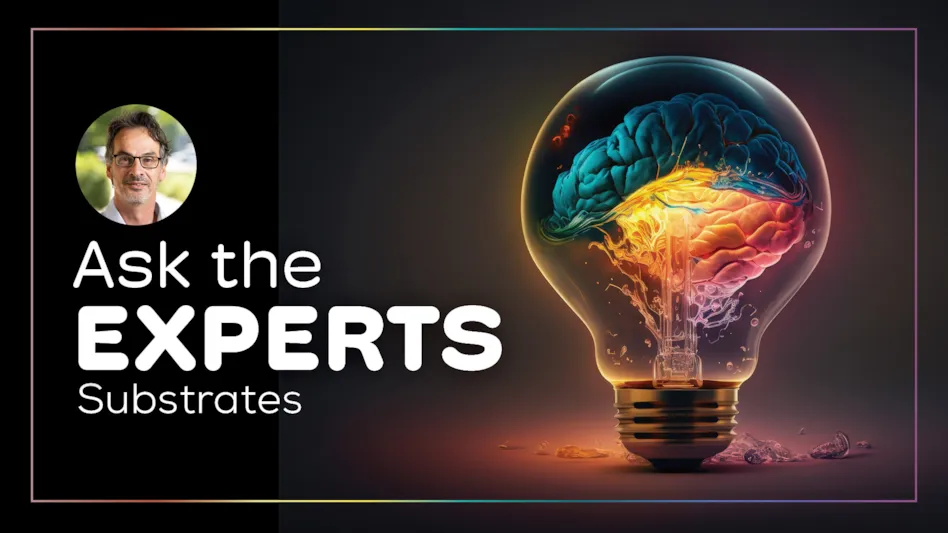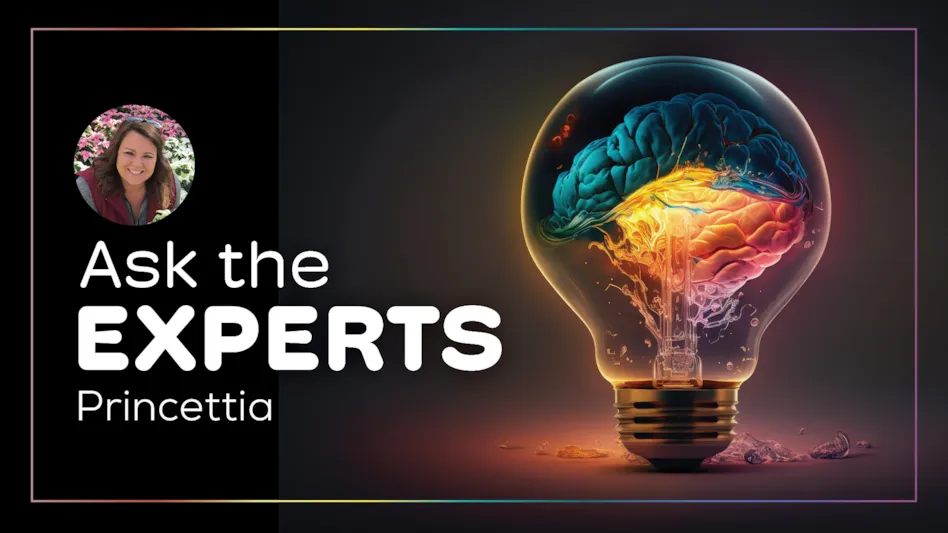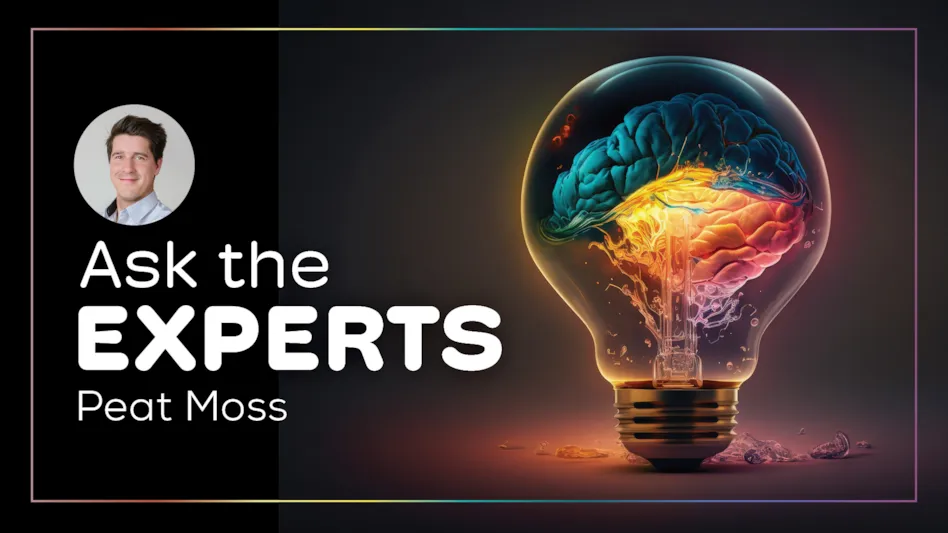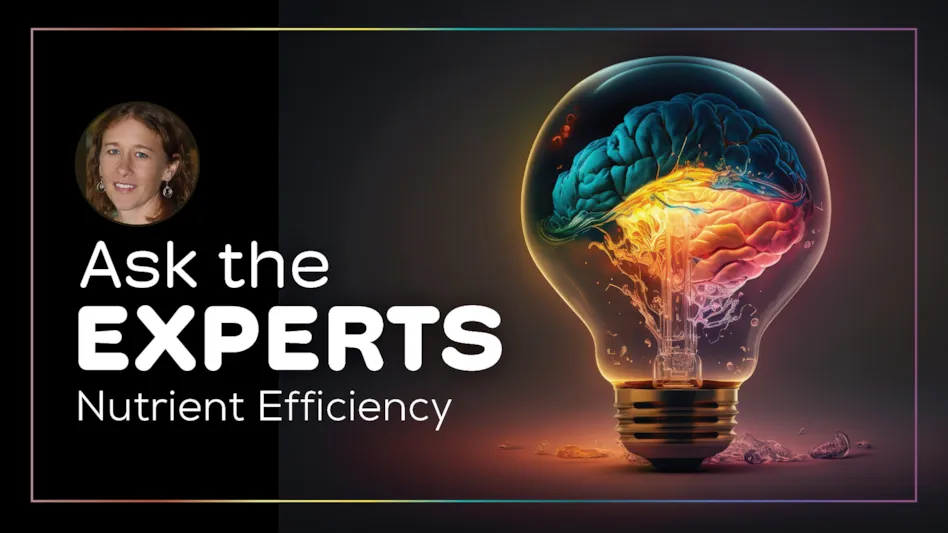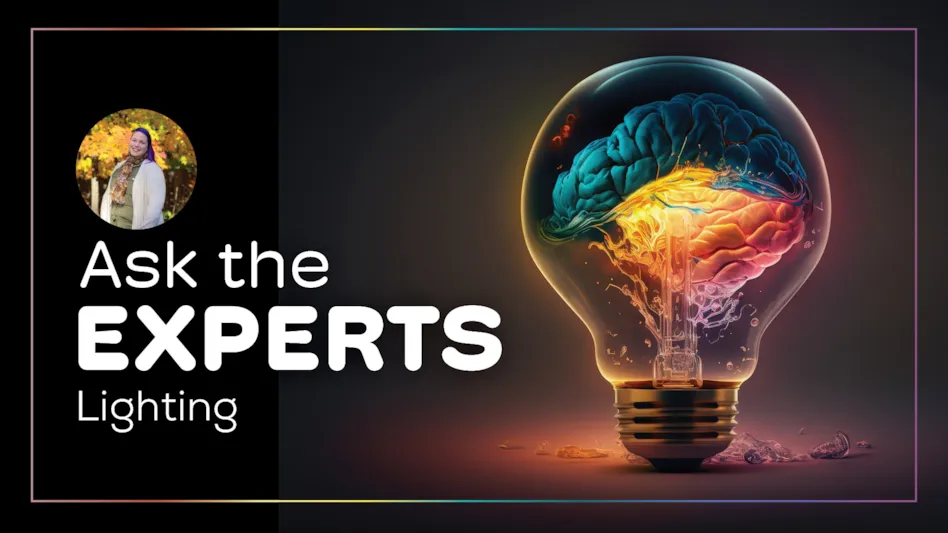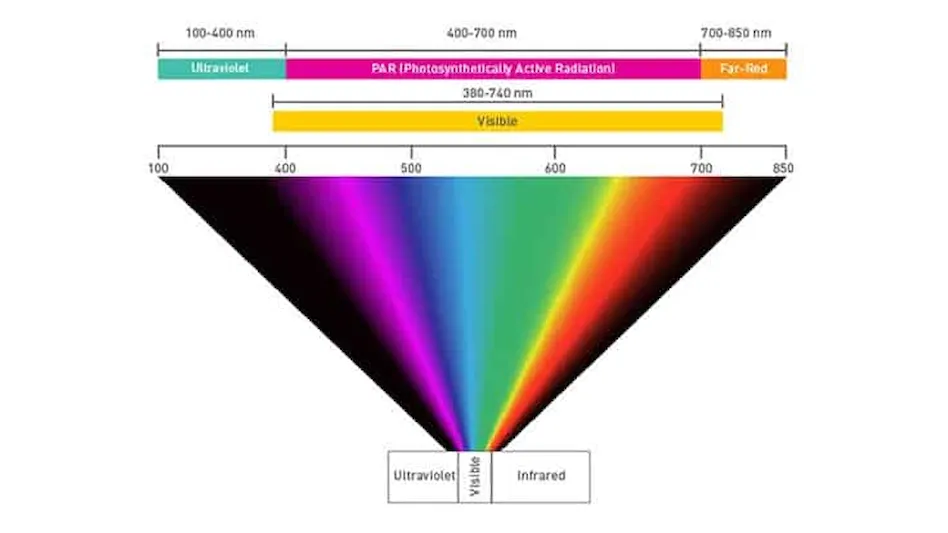
Photo courtesy of LumiGrow
Choosing the right light spectrum for your commercial operation can be a challenge. To help, LumiGrow experts break down what light spectrum is, how plants respond to light, and how light spectrum influences plant growth. Click here to view the full guide. An excerpt can be found below:
What is Light Spectrum?
Light spectrum is the range of wavelengths produced by a light source. When discussing light spectrum, the term ‘light’ refers to the visible wavelengths of the electromagnetic spectrum that humans can see from 380–740 nanometers (nm). Ultraviolet (100–400 nm), far-red (700–850 nm), and infra-red (700–106 nm) wavelengths are referred to as radiation.
As growers, we’re most interested in the wavelengths that are relevant to plants. Plants detect wavelengths that include ultraviolet radiation (260–380 nm) and the visible portion of the spectrum (380–740 nm) which includes PAR (400–700 nm), and far-red radiation (700–850 nm).
When considering light spectrum for horticultural applications, greenhouse and indoor environments will differ. With indoor environments your grow light’s spectrum will account for the total light spectrum that your crop receives. Whereas in a greenhouse you must consider that your plants are receiving a combination of grow light and solar spectrum.
Either way, the amount of each spectrum that your crop receives will have significant effects on growth. Let’s learn more about how this works.
How Do Plants Respond to Light?
Plants use light for photosynthesis and photomorphogenesis. Photosynthesis is the process by which plants and other organisms convert light energy into chemical energy. Photomorphogenesis refers to how plants modify their growth in response to light spectrum.
One example of photomorphogenesis is a plant bending toward a light source. Light also affects plants’ developmental stages, such as germination and flowering.
The light that plants predominately use for photosynthesis ranges from 400–700 nm. This range is referred to as Photosynthetically Active Radiation (PAR) and includes red, blue and green wavebands.
Photomorphogenesis occurs in a wider range from approximately 260–780 nm and includes UV and far-red radiation.
Did You Know?
Chlorophyll a and b are a plant’s primary photosynthetic pigments. It’s important to note that chlorophyll most strongly absorbs red light (600–700 nm) and blue (400–500 nm) and minimally absorbs green light (500–600 nm). Still, photosynthesis is a more complex process than simply chlorophyll absorption and involves other chemicals whose interactions with light spectrum are still being understood.
Latest from Greenhouse Management
- CIOPORA appoints Micaela Filippo as vice secretary-general
- Passion grows progress
- Registration opens for Darwin Perennials Day
- U.S. Department of Labor finalizes farmworker protection rule
- Azo Root is now available from Harrell’s
- Bidens ferulifolia Blazing Glory
- Rob Hanifin joins Ridder North America as product specialist for climate screens
- The importance of measuring light

